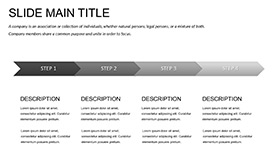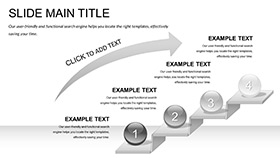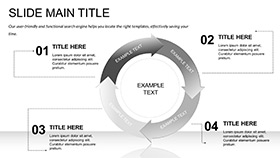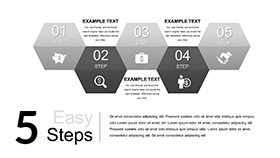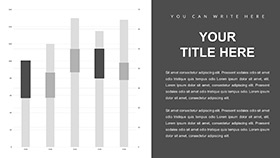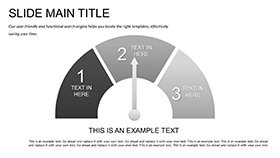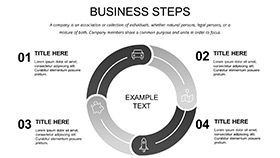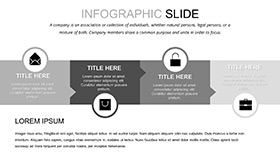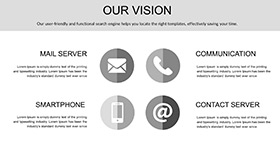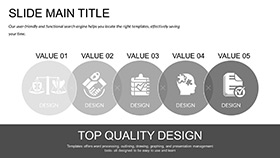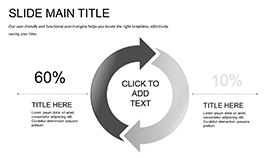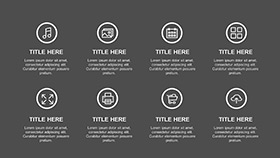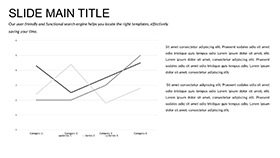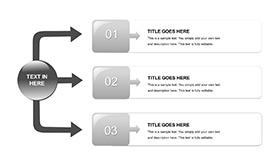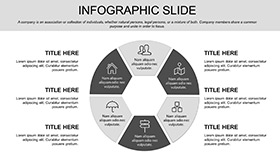In the rhythmic world of agriculture, where seasons dictate success, a solid plan is the shepherd`s staff guiding flocks to prosperity. The Sheep Breeding Keynote Template equips farmers, agribusiness consultants, and rural entrepreneurs with 28 targeted diagram slides to outline breeding strategies, cost analyses, and market projections. This tool transforms vague visions into structured roadmaps, ideal for securing loans or pitching to co-ops.
Tailored for Keynote on recent macOS, it includes three masters and backgrounds evoking pastoral scenes - soft earth tones meeting clean lines. Seven color schemes differentiate wool types or growth phases, making data digestible at a glance. Whether scaling a smallholding or optimizing large operations, these slides ground ambitions in actionable insights.
Envision a Gantt chart tracking lambing cycles or a SWOT matrix wool-deep in opportunities. For $22, snag the Sheep Breeding Keynote Template and herd your ideas toward harvest-ready presentations.
Key Components for Agricultural Precision
Rooted in practical farming logic, the template`s 28 slides cover essentials from pedigree tracking to feed efficiency models.
- Three Masters: Standardized for headers with farm motifs, streamlining deck cohesion.
- Three Backgrounds: Textured like pastures, subtle enough for focus on figures.
- Seven Schemes: Color-code breeds or metrics for quick scans in field meetings.
Diagrams like cycle wheels for reproduction timelines are vector-sharp, editable for regional adaptations.
Applying to Breeding Business Blueprints
Farmers face planning pitfalls, but this template illuminates paths. A cooperative manager might deploy the budget pie on slide 10 for expense breakdowns, slicing veterinary costs from feed allocations.
For extension services, the lineage tree on slide 18 maps genetic lines, branching to highlight hybrid vigor. In grant applications, leverage the ROI flowchart (slide 26) to project wool yields against investments.
- Outline Objectives: Start with goal-setting infographics.
- Analyze Resources: Input land and stock data into matrices.
- Forecast Outcomes: Use timelines for seasonal projections.
- Review Risks: Populate contingency charts for weather variables.
Superior to spreadsheets alone, its visuals persuade lenders with pastoral polish.
Deep Dive into Farm-Focused Diagrams
Slide 4`s bar series compares ewe productivity across years, stackable for multi-flock views. Nutritionists can customize the nutrient radar (slide 15) to wheel forage balances.
A vet consultant adapted slide 22`s health pyramid for parasite protocols, layering preventives upward. Tip: Hyperlink to breed databases for live enrichments.
Earthy palettes ground the themes, aligning with ag`s natural ethos.
Strategies for Customization
Adapt depths: Basics for starters via feed conversion slides; advanced for vets with genomic plots. Animate herd growth curves on slide 7 to simulate expansions dynamically.
An ag educator used slide 28`s summary corral to round up key metrics, fencing achievements. Ensure scalability by testing on tablets for barn briefings.
Embedding into Rural Routines
Keynote import aligns masters swiftly; share via AirDrop for co-op reviews. Export to prints for wall charts in shearing sheds.
Sync with farm apps for data auto-fills, yielding decks that evolve with herds. Outcome: Plans that pasture profits, from startup flocks to established ranches.
Gather your blueprint - download and breed brilliance.
Frequently Asked Questions
What farming aspects does it cover?
Breeding cycles, budgets, genetics, and market strategies via specialized diagrams.
Editable for different sheep breeds?
Yes, icons and labels swap easily for merino, dorset, or locals.
Multiple slide formats supported?
Core 16:9, resizable to others in Keynote settings.
Include animations for demos?
Static bases; add Keynote transitions for cycle simulations.
Suitable for small-scale farms?
Ideal - scale diagrams to match plot sizes and ambitions.
File types included?
.key, .jpg, .kth for full versatility.






